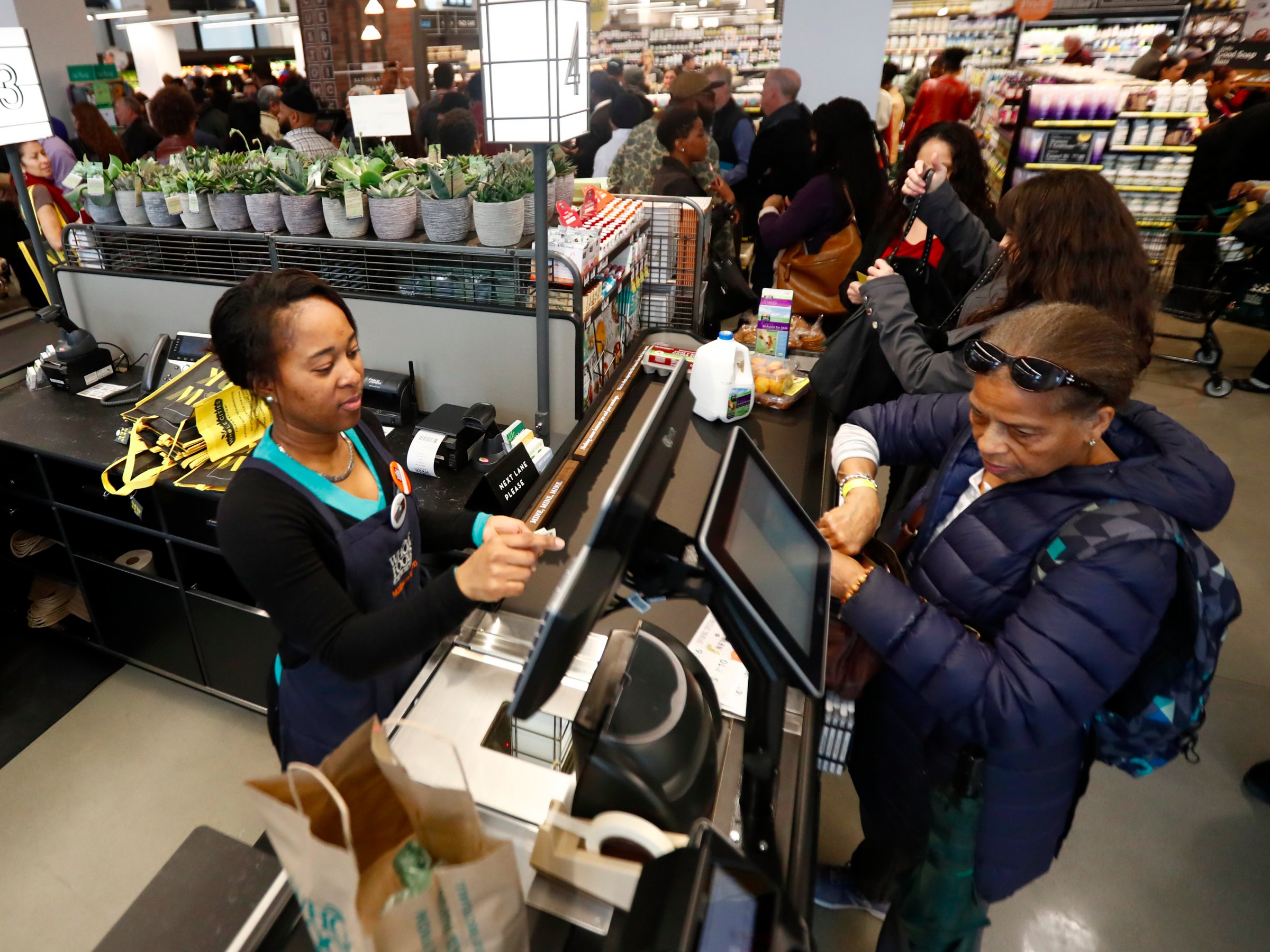 AP
APWhole Foods CEO John Mackey has come clean about one of the company’s biggest faults.
In a town-hall meeting last Friday, Mackey said the grocery chain has long prioritized its employees over shoppers, and that shoppers should instead be its No. 1 priority.
“By God, we’re gonna become as customer-centric as Amazon,” Mackey said. “They put the customer first in everything they do and think backwards. And — we — we’re gonna be the same way.”
Whole Foods’ same-store sales, or sales at stores open at least a year, have fallen for the last seven consecutive quarters.
Barclays estimates that the supermarket chain has lost at least 14 million customers over that time period.
Most of those customers are instead going to Kroger and probably won’t ever go back to Whole Foods, Barclays analyst Karen Short said earlier this year.
Analysts have repeatedly blamed Whole Foods’ uncompetitive prices — a problem that has earned it the nickname “Whole Paycheck” — for its shrinking pool of loyal customers.
But Whole Foods has been cutting prices to try and lure back lost customers, and business has yet to improve.
That’s because the grocery chain is facing a host of issues that have nothing to do with prices, and like Mackey said, it hasn’t been focusing on elements of the business that matter most to customers, according to Neil Saunders, managing director of the retail consulting firm GlobalData.
“That Whole Foods can’t turn around its fortunes is, in our opinion, the result of several fundamental flaws in its business model,” Saunders wrote in a note to clients. “Over the past few years, these cracks have become more pronounced, and the company has done seemingly little to correct them.”
He outlined three main issues:
1. Stores are cramped and uninspiring.
“A host of older stores, especially those in cities, are plain shabby and down at heel,” Saunders said. “Even newer shops, barring some flagships like the new Bryant Park location in New York City, are not particularly revolutionary or impressive. By comparison, some mainstream grocers — like Price Chopper and its new Market 32 format — are coming out with store designs that are much more creative and inspiring than Whole Foods.”
2. Food quality is ‘excellent,’ but the taste is ‘bland and dry.’
“The offering from the hot food counters is bland and dry, prepared packaged foods are hit-and-miss, and the cake and patisserie offer is often less than inspiring,” he said.
 Barclays
Barclays
Mainstream grocers like Wegmans are dominating Whole Foods in that department, according to Saunders.
“We think that Whole Foods makes too little effort on the ‘taste’ front,” he said. “The result is that it is trounced by a retailer like Wegmans, which devotes enormous resources to ensuring that its products are mouthwatering.”
3. ‘Organic and fresh’ is no longer a differentiator for Whole Foods.
Traditional and discount grocers like Kroger, Aldi, and Walmart are investing heavily in expanding their organic, natural, and fresh food selections — and stealing customers from Whole Foods in droves.
“The magnitude of the traffic declines … is staggering,” Short said in March. “As most retailers know, once traffic has been lost, those patterns rarely reverse.”
 Kroger’s fresh produce department.Business Insider
Kroger’s fresh produce department.Business Insider
Kroger now devotes several aisles in its stores to organic and natural foods and offers a variety of organic meats and fresh produce. The chain’s products, including those in its Simple Truth line of organic goods, are about 15% cheaper on average than items at Whole Foods, according to a 2016 study.
Kroger’s sales of organic and natural food totaled $16 billion in the past year, compared with $15.8 billion at Whole Foods, according to Barclays.
NOW WATCH: A nutritionist reveals the 3 foods that boost your energy levels













